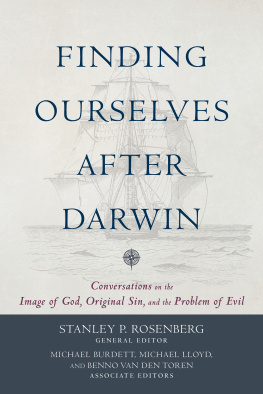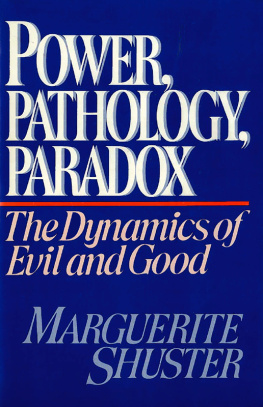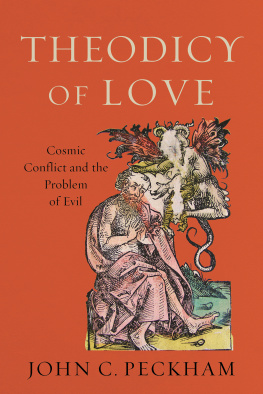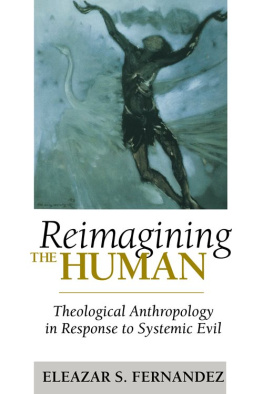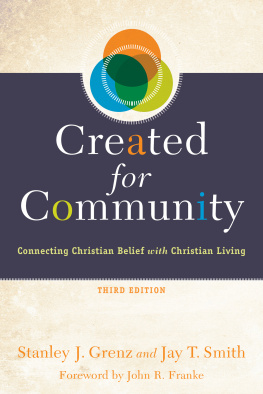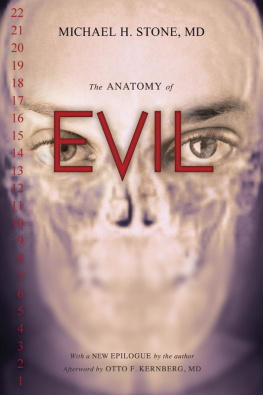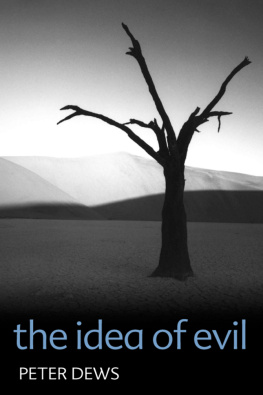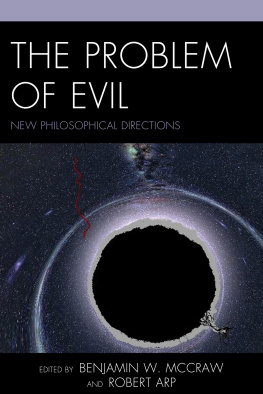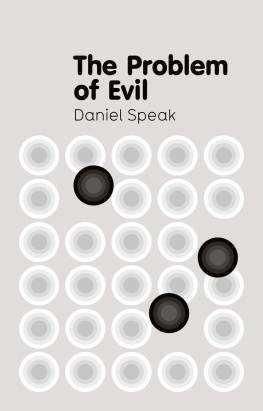This is not just another book on theology and evolution, but a serious attempt by well-established and emerging scholars to grapple with the most pressing theological issues that result from that engagement. By confining the discussion to key debates on the image of God, original sin, and the problem of evil from a range of different perspectives, the editors have achieved that rare combination of theological depth with philosophical sophistication in engagement with historical and contemporary perspectives on evolutionary theory. This is not only a book for serious scholars in this field, butgiven that it encourages open and honest debateit is also one that will be extremely useful for teaching and deserves to be fully embedded in theology courses as well as those in theology and science.
Celia Deane-Drummond , professor of theology and director of the Center for Theology, Science, and Human Flourishing, University of Notre Dame
Too often reading books on science and religion by multiple authors feels like walking into a cramped room where everyone is shouting. This book feels more like entering a big open hall where there is room to breathe and room to think. It is not that anything goesChristian theology has boundaries, what the contributors to this volume call doctrines. Doctrines such as the image of God, the universality of sin among humans, and the goodness of God have not been overturned by the science of evolution. But evolution has called into question certain ways of explaining those doctrines. The contributors to the book show that the Christian tradition has the resources to explore different ways of explaining these doctrines without leaving the building. They are to be commended for drawing us further into that space.
Contents
Cover
Title Page
Copyright Page
Endorsements
INTRODUCTORY ESSAYS
1. Making Space in a Post-Darwinian World: Theology and Science in Apposition
Stanley P. Rosenberg
2. Distinguishing Doctrine and Theological Theory: Creating Space at the Interface of Modern Science and the Christian Tradition
Benno van den Toren
PART 1 THE IMAGE OF GOD AND EVOLUTION
Michael Burdett, editor
3. Questions, Challenges, and Concerns for the Image of God
J. Wentzel van Huyssteen
4. The Biblical Text and a Functional Account of the Imago Dei
Mark Harris
5. Will the Structural Theory of the Image of God Survive Evolution?
Aku Visala
6. The Imago Dei as Relational Love
Thomas Jay Oord
Ted Peters
Conclusion to Part 1
Michael Burdett
PART 2 ORIGINAL SIN AND EVOLUTION
Benno van den Toren, editor
8. Questions, Challenges, and Concerns for Original Sin
Gijsbert van den Brink
9. Augustine, Original Sin, and the Naked Ape
Andrew Pinsent
10. Adam as Federal Head of Humankind
C. John Collins
11. The Irenaean Approach to Original Sin through Christs Redemption
Andrew M. McCoy
12. Original Sin and the Coevolution of Nature and Culture
Benno van den Toren
13. A Nonhistorical Approach: The Universality of Sin without the Originating Sin
Christopher M. Hays
Conclusion to Part 2
Benno van den Toren
PART 3 EVIL AND EVOLUTION
Michael Lloyd, editor
14. Questions, Challenges, and Concerns for the Problem of Evil
C. Ben Mitchell
15. Can Nature Be Red in Tooth and Claw in the Thought of Augustine?
Stanley P. Rosenberg
16. Theodicy, Fall, and Adam
Michael Lloyd
Michael Lloyd
18. An Irenaean Approach to Evil
Richard Swinburne
19. Free-Process and Only Way Arguments
Christopher Southgate
20. Non-Identity Theodicy
Vince Vitale
Conclusion to Part 3
Michael Lloyd
Bibliography
Contributors
Scripture and Ancient Writings Index
Name Index
Subject Index
Back Cover
Introductory Essays
1
Making Space in a Post-Darwinian World
Theology and Science in Apposition
Stanley P. Rosenberg
Walking south along Parks Road in Oxford, UK, one comes across a pair of buildings that set the stage for this book. These two important buildings in the Oxford landscape stand in apposition (but not opposition) across the road from each other. On the east side is the Oxford Museum of Natural History, built of stone and begun in 1855. debate about Darwins interpretation of evolution, which for the first time gave a cogent explanation of the mechanism of evolution (the general notion of evolution was not a novel or very contentious one in the nineteenth century). A compelling idea now had explanatory power but did not possess fully verifiable evidence, and it raised massive questions about our understanding of human origins and natural history. This was not the first time such a lag between inference and evidence had occurred. Scientific progress is replete with such stories: one of the most well known of these is Galileos inferences supporting Copernicus, which could not be proven until the early nineteenth century, when technological advancements finally achieved the ability to create sufficiently clear, powerful telescopes and verify the transit of Venus across the sun.
Oxfords Museum of Natural History offers an architectural style directly reminiscent of the great British Gothic cathedrals, with an entrance and windows in the Norman style. In addition, it has a monastic kitchen (from the abbots kitchen at Glastonbury) built alongside to represent chemistry, and its internal structure features a grand open space with columns and carvings like a Christian basilica and other Gothic buildings. The style was employed not to mock or replace the church but to be a testament to the enduring connection its designers found between the book of life and the book of nature. So, this buildingpresided over by an angel of God and in an architectural style emphasizing the spiritualoffered the stage for one of the oft-reported, and frequently mispresented, debates between science and religion. Or was it such a debate?

